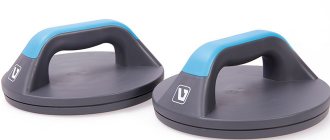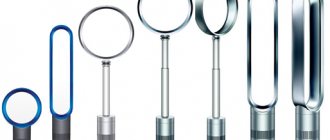Photo showing the stop on the gate leaf
Swing gates can be considered an ideal design, if not for one significant drawback - the tendency to close spontaneously at the slightest gust of wind. The result is scratches and dents on your favorite car, and sometimes even injuries of varying severity on the body of their owner.
Simple devices can help you avoid trouble - sash clamps, which are popularly called stops. Those who have not realized the need to use them can prop up swing gates with any object that comes to hand, or go to the store for a ready-made stopper. Or you can strain your own mind and make supports with your own hands.
Stoppers-constipations
Latch type latch for gate leaves
The simplest and favorite option for home craftsmen. The stop works much the same as an old-fashioned window latch, but is much larger in size. Such a device is not yet commercially produced, but it is quite possible to make it yourself. For this you will need:
- two steel tubes (one for each swing gate leaf) about 15 cm long and 1.6 cm in diameter;
- steel plates 10 cm wide and 15 cm long;
- pins that fit freely into the pipe, at least 20 cm long.
The entire process of making a retainer with your own hands consists of several stages:
- Steel tubes are welded to the plates and then attached to the bottom of the gate. For doors sheathed in wood, this is done using self-tapping screws; the plate is simply welded to metal doors.
- A lever is welded to the upper end of the pin at a right angle, playing the role of a handle, or simply a pin, preheated on a gas burner, which is bent and inserted into the pipe.
- Now we open the sash and find a place where it will be necessary to drive the reciprocal part of our “latch” to a depth of about 30 cm. We take into account that the pin must fit into it at least 10 cm. Do not forget that the gate leaf may be located slightly higher than the entrance level.
- To prevent the pin from interfering with opening the swing gate, we weld a hook above the lock on which the handle of the pin will rest.
But keep in mind the disadvantages of this device. The counter pipe into which the pin should be lowered may be covered with snow in winter and will have to be dug out, which is not always time. You can do without a mating part, but in this case the ends of the pins must be pointed. Such a latch will, of course, be less reliable than the original version, but in extreme cases it will do. If there are no steel pipes of the required diameter, you can slightly modify the device. Replace it with two or three loops. The result is a simple but quite effective design.
Locking direction
If you manage to make a gate with your own hands, then installing a lock on it will also not be difficult.
Devices can be divided into 2 main types based on this criterion. Latch in warehouse
Vertical latches
An effective gate latch that provides the most reliable locking of the system. Basically, this type of locking mechanism is installed on swing structures. To secure the door leaf in the closed state, a handle with a steel rod is used, which fits into a recess made in the ground.
Vertical lock for wickets and gates
These latches are also used in mortise sashes, but in a miniature size. To secure the top and bottom of the gate opening, steel mating fasteners with a hole for the bolt rod are installed.
But when installing a lock from below, fixation is carried out by a hole in the ground filled with cement screed. If desired, you can install a double-sided latch on the gate.
Scheme for making a lock for a gate
Horizontal overhead valves
These are the most common locking mechanisms used in all types of gates and wickets. The principle of operation is approximately the same as that of the vertical closing method. The latch itself is made from a metal rod or plate, a locking eye and a holder. Popular factory models include the gate lock NOEZ ZK-230-S (black, matte).
The photo shows a door in the country house.
Installation option
Stops on carabiners
The sash is secured with a carabiner
An original and cheap solution to the DIY problem. For implementation you will need (for each swing gate):
- cargo sling with a metal hook at the end;
- small carabiner;
- eye bolt with M8 thread.
The tools you need are a drill with an F7 drill, an M8 tap and a wrench for it, and any adhesive-sealant. If you have experience using the above tools, then installing the clamp will take no more than half an hour. The process will consist of the following steps:
- Two holes are drilled on the inside of the frame at the same height, and threads are cut into them.
- The eye bolts are coated with sealant and screwed into the prepared holes.
- Carabiners are put on eye bolts, and cargo slings are threaded through them.
The hooks may be caught on the adjacent garage door. But nothing prevents you from using a bracket attached to a fence post or wall for these purposes. You can attach it to any nearby strong structure and get a cheap and reliable stop, devoid of the disadvantages of a locking lock. Unfortunately, the appearance of this device is not very attractive, which many may consider a significant disadvantage.
Gate bolt: buy or make it yourself
You usually buy locks for gates, but make them yourself for gates. What's the matter? There are several reasons:
- The gate is used more often; the mechanism should work like a clock. Can you do it yourself?
- The lock for the gate is always visible. It should have a beautiful appearance and at the same time some kind of secret opening mechanism or a regular mortise or rim lock.
- The gates are more or less standard and there is enough choice of locking devices to choose the right one.
- Gates are more individual: sizes, materials, design. Constipation is hidden. No one wants to give such wide access to their plot or garage. Beauty fades into the background, the main thing is reliability and safety. That's why we make gate bolts each in our own way. And what design we choose is already a secret.
Hook retainer for aesthetes
Image of a lock for holding gate leaves in the form of a hook
A very simple device, but it does its job perfectly. It has a respectable appearance and even allows you to fix swing gate leaves in two or more positions. For manufacturing you need (for both doors):
- metal corners 50 mm long, 80 cm and 15 cm;
- steel rod with a cross-sectional diameter of 12 mm, approximately 1.2 meters long;
- welding machine, self-tapping screws, drill, vice.
Now let’s do a few simple steps:
- In the larger corner, which will act as a hinge, three holes are drilled on one side for fastening to the gate frame. On the other side, there are two holes at the edges, of such a diameter that the end of a steel rod can fit freely into them.
- Now the hard part is making the hook. One side of the heated steel rod is bent into a ring (don't forget to leave a gap so that the hook can be put on the canopy!). The other side is given a U-shape. It's difficult, but quite possible.
- Now a canopy is made from a smaller corner, for which two holes are drilled in it on one side for fastening to the sash, and in the middle of the other side - one hole for fixing the hook.
- We fix the corners so that the larger one is on the gate frame and the smaller one is on the leaf. You can use self-tapping screws (for wooden gates) or welding (for metal ones) for these purposes. We put the hook on the canopy and finally bend the ring.
That's all, the length of the hook and the location of the holes will have to be calculated empirically, experimenting with gate leaves. The result is a simple but reliable DIY stop. It will allow you to open the gate completely or leave the swing gate ajar.
Features of the mechanism
The main purpose of the stops is to hold the gate open.
The need for a structure is determined individually
If the device works properly, even a strong wind will not be able to close the gate.
Product includes:
- spring;
- a special bracket (it is equipped with holes that are intended for attachment to the sash using self-tapping screws);
- pins.
Note! You can use not only branded stops, but also homemade ones.
Their main drawback is their unpresentable appearance. They function not only no worse, but in some cases even better than specially manufactured products.
“Self-made” are able to withstand serious loads. The owner also has the opportunity to attach them to frames made of high-quality metal.
Stopper
Metal retainer made from pipes
A simple device that can be used by anyone whose gate is lined with wood. To make it yourself, you will need a wooden block and a window hinge. One end of the loop is rigidly fixed to the end of the bar, the other is movably attached to the gate leaf.
You can also make a metal analogue of this device, consisting of a pipe movably attached to the sash. In the non-working position, the pipe rises upward and is held in place by a rope loop. To fix the gate, just lower the pipe. To increase the stop area, the top of the pipe should be cut at an angle.
Hidden latch
Often, owners want to install a gate on the gate in their yard or country house, in addition to the lock, that is difficult to detect and open. This type of valve is made on a wooden gate.
Let's say that such a bolt closes downwards. To install it, you need to drive a pipe approximately 0.5 m long into the ground. Pipe location: on the side of the site, where the gate opens. The pipe is chosen with the same diameter as the block. Brackets are attached to it, another bar is inserted into them, which, sliding through the brackets, falls into the pipe. The bars should not protrude anywhere. You can also add a chain.
In the video there is another version of the deadbolt, made by yourself:
Latch-trap with pawl and spring
A more complex device, which has the advantage that it allows the gate to be locked automatically. It consists:
- a bracket with a groove made from a 50 mm angle, which is attached to the sash;
- dog in the shape of a hook;
- a hinge that will ensure the mobility of the dog;
- steel pipe with a diameter of 40 mm;
- a metal plate 4 mm thick welded to the pipe;
- rubber gasket glued to the plate. It is necessary for the device to operate silently.
Stop for gate leaves with a spring
The pipe with the dog is attached at the required distance from the wall. The bracket is attached to the gate leaf. The principle of operation is quite simple. When the sash moves, the bracket attached to it lifts the pawl, which then lowers and securely fixes the sash.
A similar device can be placed at the bottom of the gate, but you will have to equip it with a spring. It will return the dog to a horizontal position. To close the gate later, simply lower the pawl with your foot.
Types of locking devices
The following locks are suitable for garage doors:
- horizontal type;
- vertical view;
- additional locking devices.
Locks for horizontal gates differ in their central, upper and lower locations.
Additional locking devices are used to lock the doors of various outbuildings.
By design, locking devices are divided into:
- mortise;
- invoices;
- rotary;
- crossbar type.
The use of this or that mechanism is determined only by the wishes of the garage owner. Often, locking mechanisms are quite simple in design. Such simple devices include a “spinner”. This lock guarantees complete contact of the leaves with each other when closing the gate, which ensures easy opening from the inside and does not allow opening from the outside.
Another option for locking devices for garage doors is the most common latch, which is simply mounted in the required place. One of the options for a latch is a bolt made from an iron strip. To install such a locking device, you should know how many parts are available and where they will be located.
You can come up with many different types of locking mechanisms. And for this you do not need to use complex and expensive locks, which can be easily cut, unlike deadbolts, which cannot be cut.
Latch-trap without spring
To make it, you will need a thick steel plate, which needs to be bent on one side and a handle welded to the curved end. A steel rod is welded to the bottom of the plate, which is subsequently inserted into brackets fixedly fixed to the ground.
Important condition! For the stop to work correctly, it is necessary that the flat part of the plate be much longer, and therefore heavier, than the curved section. Then the gate leaf, when moving with its mass, will lower the curved end of the plate. Afterwards, the remaining flat part will lower under its own weight, lift the curved end with the handle and fix the gate. To close the swing gate, simply lower the handle down.
The described clamps are not all options for do-it-yourself wind stoppers for swing gates. Perhaps the described devices will serve as an impetus for your imagination, and you will come up with your own original way to solve the problem. And we can only wish good luck to the master!
Espagnolette for external gates
The espagnolette is easy to design and install
A simple locking device such as a latch will help strengthen the protection of external gates. Its advantage is the ease of assembly, the disadvantage is the formation of a gap when the valves do not fit tightly. However, constipation remains reliable. It looks like a metal rod with a stop, moving on a slide. The device can be bought at a building materials store or welded at home.
Of the types of latch, we draw your attention to the bolt, the metal strip of which fits into an iron loop pocket. You can make it as follows:
- weld 2 hinges along the edges of the gate leaves;
- attach the tongue on one side so that it fits tightly into the 2nd loop;
- To enhance the functions, equip the bolt with a stopper.
Varieties
Modern types of gate locks differ in mounting features, types of construction, and appearance.
Construction type
Depending on the installation features, there are horizontal, vertical and additional gate locks.
Horizontal ones are installed in the upper, lower, and also in the central part of the sashes. Used primarily for gates and wickets.
Locking devices with a vertical principle of operation are placed at the top, bottom and in the middle. Installed in garages on personal plots, sliding gates of the house.
Additional ones are used in gates, doors of small utility rooms and outbuildings.
Ease of installation
Installation Features
Locking devices can be mortise, rotary, overhead sliding, screw type, as well as with fixation. The latest types of locking devices have a spring, rotary or groove mechanism.
The elements of the locking device are installed on special frames or directly on the door leaf.
Types of models
- Turntables. The axis of rotation is located in the middle. By twisting the bolt, both panels are locked. This simple mechanism perfectly protects against penetration into the room while the owners are away. For a long time it was believed that it was impossible to open such a device.
- Barrier type of constipation. This device model is a type of turntable. The axis of rotation is at the edge.
- Espagnolette. This is the most common type of deadbolt. They are bought, but often made independently. In the latter case, they are usually made very durable, but the appearance suffers significantly. The lock is used to close and hold the panels in the required position. An espagnolette with a spring base is suitable for sliding gates.
- Flask type design. The mechanism of this type of constipation includes a loop that secures the lever and the lever itself. The bolt is attached to the canvas. When closing the gate, secure the loop and throw the lever all the way. It is believed that if the doors are closed, all the stress is absorbed by the flask mechanism. The bolt can be opened with an effort estimated at several thousand kilograms. Another advantage is that there are no hollow pipes in this type of constipation, so they do not become clogged.
- Rotary rack. This mechanism is a vertical tube-shaped post. It is attached to the canvas with four hinges. A lever is installed in the middle; it is made with a bolted connection so that it can be folded. The lever allows the stand to rotate around its axis.
- Constipation with fixation. Such devices are used in trucks and containers. By analogy, vertical blocking is also done for doors and gates.
- Safe device. Blocking occurs at the top and bottom.
The most reliable are a flask lock, a rotating rack device, bolts mounted on a welded frame, and a turntable.
Advantages of self-production and place of use
Making your own locks allows you to use old spare parts and materials, save money and make a reliable design. If you have a large gate installed, but there is no locking mechanism, then you will not be able to protect the yard area, house and buildings.
If you install the lock yourself, the attacker will not know how to open it due to the non-standard design, which will protect against theft. Of course, if the thief is a professional, he will open the lock with a hairpin or a crowbar.
But still, a strong barrier will cause him inconvenience. For garden plots, homemade bolts are used.
To protect a more valuable place - the garage, locking bolts are used in combination with padlocks. And for private homes, the most complex options are suitable: barriers, padlocks and electronic locks.
Categories of devices can be used to protect the territory:
- Regular latches, latches, etc. They cannot protect against burglary, but they will prevent opening and secure the closed position.
- Container category - they are large and durable. Suitable for sliding and swinging sashes.
- Mechanisms produced for hangars. They lock heavy doors that other devices cannot handle.
- Systems equipped with electric drive and alarm. They are suitable for private homes.
Owners select the category of constipation depending on the required functions. Often the private sector does not require signaling; container mechanisms are sufficient.
Principle of operation
Design options based on operating principle can be divided into several types.
Latch on a wooden door
Screw latches
A simple screw latch is attached to the outside of the gate. This model consists of a threaded rod and a release lock that has a small pin and groove. The locking mechanism is activated by a key with the required slot and a pin at the end.
You can easily make such a latch for the gate yourself. It is recommended to galvanize the finished product to extend its service life.
In the country
The complexity of this homemade design lies in the fact that there must be enough free space in the doorway for a threaded recess into which the key in the form of a rod is screwed directly. Moreover, this overhead mechanism is very easy to hack by selecting a similar key.
Overhead sliding locks
This is a mechanism that is easily attached to a flat metal profile. Due to the flat rod, such a lock ensures the strength of closing the door leaf. The mechanism can be fixed either from the inside or from the outside of the fence. For greater efficiency, you can install a padlock on the outside.
Gate bolt drawing
Rotary slot mechanism
This is a simple lock with a high efficiency and degree of protection against burglary. You can assemble the device yourself, but certain knowledge and equipment will be required. The key, which is lowered when inserted into the slot, activates the gear mechanism by circular rotation, which unlocks the sash.
Rack and pinion bolt mechanism
This product can be purchased at the Leroy Merlin retail chain. Only a specialist can make such a locking device independently. The design consists of a key with recesses and a locking base. This mechanism is highly durable and has a long service life, but there is a possibility of the key being counterfeited. Therefore, some additional lock is often used to lock the door.
The photo below shows an overhead valve.
Metal door in the fence
Mortise design for gate
This is the most popular design of locking mechanisms, sold in every hardware store. To install this lock, you need to cut a groove in the base of the sash. The reliability of such a device is very high.
Spring latches
Such structures are most often installed from the inside. They are an additional locking mechanism with a snap-on base. Their spring device makes it possible to easily activate the latch.
Device
Code lock for gate
This is a convenient lock with a high degree of security. The mechanism is activated by simultaneously pressing the keys in accordance with a preset digital combination. For reliability, it is best to change the code regularly.
Diagram with dimensions
Electromagnetic lock
Thanks to the latest technology, electromagnets are practically impossible to hack. A magnetic type lock can be purchased in stores. To install the structure, the help of craftsmen will most likely be needed.
Thanks to a reinforced magnet, powered by electricity, the closed gate is firmly fixed. When the door is locked, it closes automatically. The device is opened using a magnetic card or button.
Outdoor electric strike
Automated systems
Automated garage locking systems would also be a good solution. Such mechanisms fall into two categories:
- Electromagnetic. The principle of protection is based on the operation of an electromagnet: under the influence of voltage, it fixes the sash immovable. A key card or code is used as unlocking.
- Electromechanical. The mechanical basis is the crossbar system that sets the door in motion. You can unlock this lock using a key, code or application.
To prevent the buttons from jamming, we recommend periodically changing the password code. The proposed move will help prolong the use of the automated lock.
DIY spinner
A spinner is one of the most common options, and such a lock can be installed with your own hands. In order to make a lock of this type, you will need:
- Wooden beams are about 50 mm thick.
- Metal strips.
The essence of the work is the turning movement, with the help of which the beam locks the gate. It is mounted to the canvas thanks to a through bolt. Resting against the door block, the beam creates a tight fit. It is impossible to open them from the outside due to the lack of any mechanism.
The peculiarity of this latch is its simplicity and reliability. When installing a lock with your own hands, you may encounter the only problem - the presence of a small gap between the sashes. However, due to the design - the latch, which fits into the slide with a stop, it is not possible to open them. You can make such a lock yourself or go to a specialized store for a ready-made design.
Please note that using such a lock, you can create a convenient sliding system by welding a metal eyelet at the bottom of the sash. Thus, elements made of metal will allow you to reliably and with guaranteed safety lock the gate without fear of penetration from the outside
Need to take into account
When choosing a latch, take into account the location of neighboring garages. Not everyone may like it when a neighbor begins to hook a hook onto his gate or securely fastened hangar lock.
Factory-made products can hold heavy structures very poorly. They cannot be used for massive gates to a warehouse or production workshop. A door design for the entrance to the garage is more suitable for this.
Secret castle
Hidden mechanism device
Sometimes the canvas does not show either a hole for a key or a hole for a lock, and the gate does not open, as if there is a lock from the inside. If you examine the canvas more closely, you will find, however, that there is a valve on the reverse side. But how it closes from the outside; at first, the mechanism of this constipation is not clear. It turns out that there is a hexagonal screw head on the door. It is turned with a special hexagonal shaped key. On the inside there is a rail, which, when the bolt is turned, closes the door locking device by rotating. Such constipation is done quite easily.
A flat flat is made on the tail of the bolt using a file. A latch is attached to it, in which a slot is made for the flat.
Collect constipation like this:
- drill a special hole for the threaded section of the bolt;
- use a thick drill to make a recess for the bolt head so that it can sink into the recess on the canvas;
- on the other hand, put two washers on the bolt and press it with a nut so that the bolt head is sunken;
- The valve is placed on the prepared flat and pressed tightly with a nut.











